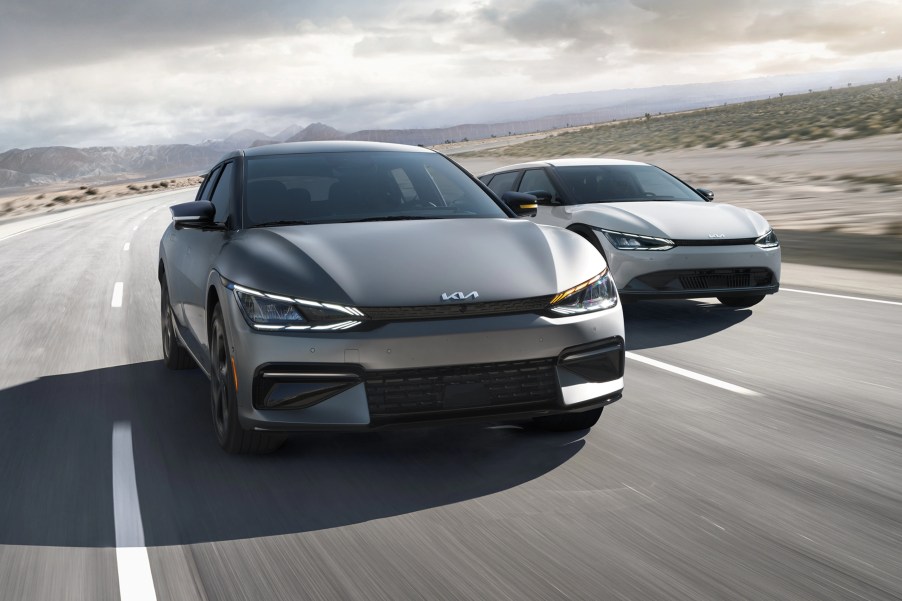
Is a BEV The Same as a PHEV?
There are a bazillion acronyms getting thrown around the automotive world right now to describe the varying electric vehicles now that manufacturers think we all know. Or should know. BEV, PHEV, ICE, MHEV, HEV, and other acronyms are tossed about as if we know the difference as well as we do coffee or tea. The two most obvious, though, are battery electric vehicle, or BEV, and plug-in hybrid vehicle, and they’re similar, but not the same.
What’s a BEV?

A battery electric vehicle is, simply, an electric vehicle. Teslas, the Kia EV6, and the Ford F-150 Lightning are all BEVs. BEVs have batteries that are large, usually very large, with capacities from 40 kilowatt hours, or kWh, to 200 kWh. A Ford F-150 Lightning, for example, has a 131-kWh battery. An entire house will use about 30 kWh a day to power everything.
Battery electric vehicles don’t have gas motors at all. Instead, most are built on a skateboard-like platform of batteries with the seats, body, and everything else stacked on top. General Motors and Honda, for example, created the Ultium platform that everything from 2024 Honda Prologue to the Cadillac Lyriq will use for power. It is, basically, a giant series of laptop batteries connected to motors and wheels.
What’s a PHEV?

A plug-in hybrid vehicle, or PHEV, is another box of chocolates entirely. Like those candies, they come in many flavors and types and you get more out of some than others. Essentially, a PHEV is a gas-powered car or SUV that has a battery system adds power. Most can go several miles on all-electric power before starting the gas engine. Some examples include the Jeep 4xe SUVs, the Toyota RAV4 Prime, and the Mitsubishi Outlander PHEV.
PHEV’s are both better, and worse, than either all-gas or all-electric vehicles. Yes, they can get better mileage than a gas car and have a much better range than an electric one. But when you deplete the battery and drive using just the gas engine, most get poorer gas mileage because you’re hauling around hundreds of pounds of extra batteries. However, if you charge it, you can go several miles without even using the gas motor. There are differences, but most use a similar system that the U.S. Department of Energy cleverly explains.
Which PHEV SUV has the longest electric range?
The longest-range PHEV today is the Toyota RAV4 Prime. The RAV4 Prime SUV can go 42 miles on a charge. Because the RAV4 Prime combines a gas motor with electricity, it makes an impressive 302 horsepower and is also Toyota’s quickest SUV with acceleration like a sports car.
PHEVs are getting better and better. The first generation of PHEVs, like the first Mitsubishi Outlander PHEV had an all-electric range of 22 miles. The new 2023 version can go 38 miles on a charge, which is more than enough for most of us to commute with. Once you fill the tank, it has a total range of 420 miles, which means you’ll need to stop before the Outlander does.


